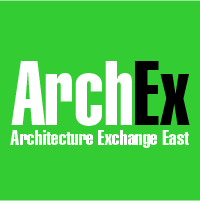
Online registration for the 30th annual Architecture Exchange East closes Oct. 25, 2017. Register today>>
 This is the last chance for you to lock in your spot for our exciting conference. Here are a couple of sessions you might be interested in attending:
This is the last chance for you to lock in your spot for our exciting conference. Here are a couple of sessions you might be interested in attending:
Capital Trail Walking Tour
2:00-4:30 p.m. Thursday, November 2nd
Take a guided walking tour along a half-mile segment of the recently completed Virginia Capital Trail, a regional multi-use trail that connects the capital city of Richmond to Williamsburg, Virginia’s historic capital. The 50-mile long paved trail, fully completed in 2015, follows the Route 5 corridor along the James River, providing recreational opportunities for pedestrians, joggers, and cyclists of all ages and abilities. This walking tour will showcase the westernmost segment of the trail extending from Great Shiplock Park along the Kanawha Canal to the historic Shockoe Bottom area in downtown Richmond. On the walk, you will pass beneath a railway through the ‘Low Line’, a linear park and native plant installation. Tour guides will discuss the history, planning, design, and overall success of the Virginia Capital Trail.
An Urban Sketching Excursion: Sharing Techniques and a Field Experience
3:00-5:30 p.m. Thursday, November 2nd
Urban Sketching has grown an enthusiastic following as plein air (outdoor/indoor from real life) painting, drawing and sketching has enjoyed a worldwide surge in interest and participation in recent years. As urban sketching is about capturing the spirit and appearance of places and experiences, it has wide appeal to architects and designers who find application in their work, benefit from development of the observation and documentation skills involved, and just plain enjoy doing it. The official Urban Sketchers Facebook page boasts over 55,000 members who post and share inspiring, diverse sketches from all over the world on a daily basis. The group sponsors an International Symposium each year, with demonstrations, training and “sketch-crawls.” Andrew Moore of Glave and Holmes Architects and Charles Piper of BCWH are experienced urban sketchers who are enthusiastic about sharing the sketching experience with others. This session will include a half-hour presentation that introduces plein air sketching, a variety of techniques and approaches to quick and effective sketching and a primer on typical materials and equipment. They will also share inspiring images from other Urban Sketchers before hosting the group on their own urban sketching “sketch-crawl” in downtown RVA. Weather influencing, we’ll take an hour and a half visiting a number of locations walkable from the convention center to try out our skills in Richmond’s urban center, providing encouragement and some kind instruction in the process. Participants are welcome to linger longer than 90 minutes if desired, as time flies when you are having fun! Bring your own materials- while you can sketch with almost anything, we recommend you bring a sketchbook with good quality paper, a variety of pens and pencils, a portable watercolor kit, water brushes (Pentel is recommended) or conventional brushes and water in a small container.
311: Living Machines – The Future of Interactive Smart Buildings
8:30-9:30 a.m. Friday, November 3rd
While buildings will always have a brick and mortar component, imagine a future where buildings learn, interact real time with their occupants, and self-predict their maintenance needs. Far out? Not really, your car already does it, and we are already there with current case stories. Our future buildings will be alive. They will know when you arrive, learn your use patterns to gain higher efficiency, adapt to your use patterns, and even adapt to your mood and health needs. All by way of microsensors, personal devices and apps, and artificial intelligence and machine learning. Now, imagine every building was like a leaf on tree plugged into a master city grid and regional smart grid all acting as one to self-sustain itself, its occupants, and the City’s power needs. The future of smart buildings will have a profound impact on people, the environment, and building systems management. In this session, we will explore firmwide research on the futurist outlook of buildings that were predicted by Le Corbusier in his theory of the machine for living. We will explore case stories of the PNC Tower and its breathable façade and automated systems, we will review the Shanghai Tower and its advances in smart building technology, and we will explore the recently designed Corning Headquarters and its use of automated facades and electrochromic View Glass. We will explore challenges to developing these living machines, city and building infrastructure needed, and the political and code regulations needed. Learn recent trends and statistics in the market that suggest what is driving the transition to living machine smart buildings.
Online registration for the 30th annual Architecture Exchange East closes Oct. 25, 2017. Register today>>
